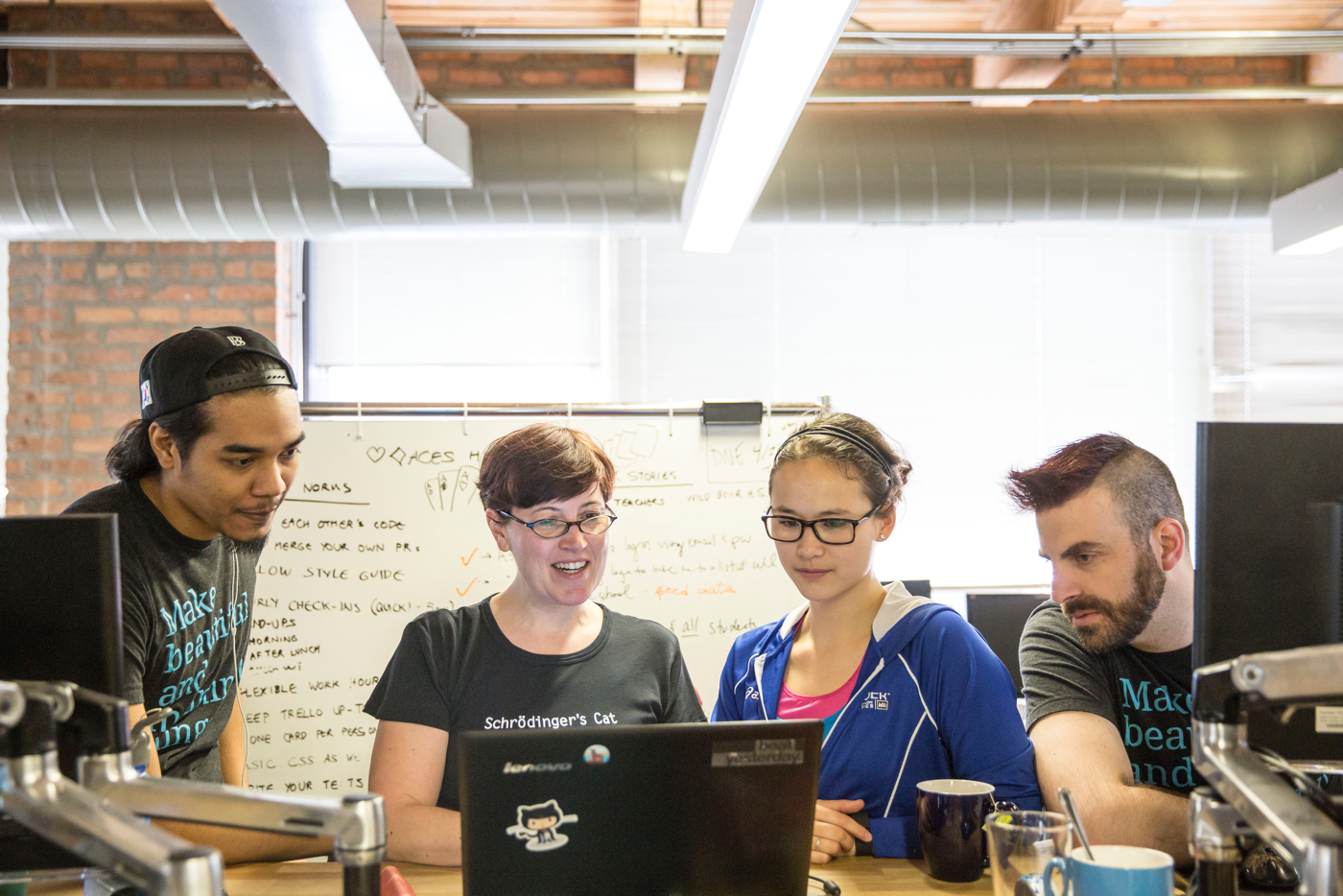The road from knowing a little HTML and CSS to proficiency can be difficult and demanding. Likewise, it can be enjoyable and advantageous. As with all skills, though, it takes time and practice to get better. Having worked with HTML and CSS for years now, I want to share how I intentionally practice and continue to improve my HTML and CSS skills and understanding.

Practice Intentionally
To begin, practice should be intentional. That is to say, the quality of our practice is equally, if not more, important as the quantity of our practice. Our practice should be aimed athwart is just outside, or stretched from, our current skill set. It shouldn’t be aimed at what is already inside or too far outside our current skill set.
The quality of our practice is equally, if not more, important as the quantity of our practice.
Working on what we already know isn’t motivating and will become tedious. Working on what is far outside what we already know is too challenging and will become discouraging. The sweet spot is working just outside our comfort zone, following the line along what we currently can and cannot do. Our practice needs to revolve around building websites that allow us to comfortably stretch our capabilities, and add more skills to our already growing skill set.
Sounds good, but how do we do that?
Look for Real Work
From my own experience, and from those I’ve discussed this with, the best way to intentionally practice and improve your HTML and CSS skills is to find a real website to build. Working on an actual website provides you the ability to stretch yourself, to grow, and learn where you best see the opportunity to do so. It’s not forced. Rather, you learn in context to the website you’re building, and where you’re familiar. From there you can distinctly see and measure the new skills you’re obtaining. You can do so comfortably too, not unintentionally stretching yourself too far.
Build a Website for Yourself
The easiest way to begin is to build a website for yourself. This isn’t a groundbreaking idea, however, it is the most attainable. If you can, build a website for yourself, perhaps including your resume, portfolio, or the alike. If it’d be easier, build a website around an interest or hobby, perhaps something you collect, a sports team you favor, or a vacation you took.
By solving your own problems learning will come organically.
The thought is to take your first step, big or small, and get some experience writing HTML and CSS. You’re creating the foundation and context in which all other learning will be built on. If it takes time, no worries. Work at your own pace and focus on simply completing the website, not learning. By solving your own problems learning will come organically.
Build a Website for a Friend
Outside of creating a website for yourself, consider building a website for a friend or family member. Chances are you may know someone who would love a website yet doesn’t know how to build their own. Maybe it’s a teacher who’d love a website to host assignments for their students, maybe it’s a handywoman or man who’d love a website for their side business, or maybe it’s an athlete who’d love a website to help their recruiting efforts.
You never know who could provide the inspiration for your next website or project. Don’t be afraid to ask around. For me, the teacher, handyman, and athlete were all family members.
Build a Website for a Local Artist or Nonprofit
Local artists and nonprofits are often an underserved audience in need. Many of them have small budgets and can’t afford to hire an experienced professional. As such, they’re often happy to pay beginners for their help and support.
In addition making a little money and supporting the local community, working with artists and nonprofits also helps you improve the soft skills of working with a client, including as project management, feedback and critique, budgeting, and goal setting.
Build a Website for a Small Business
Another audience in need includes small to medium size businesses. Many of these businesses have great budgets and are an ideal client for making money while continuing to learn.
As a business, susceptible to sales calls and the alike, these may feel a bit more intimidating to work with, and honestly some may be. That said, if you come across a business you truly like and feel you can help there isn’t any harm in extending an offer to do so. They may say “no” but given a genuine offer you may just be surprised at how many say “yes” too.
Attend a Bootcamp
Going out and finding real websites to build takes time and effort, that of which can take away from practicing and improving your HTML and CSS skill set. There is another option, that being to attend a development or design bootcamp. These bootcamps do the work of providing the real websites and projects for you, as well as a guided curriculum, and a group of peers to work with. Collaboration is key for getting a job as a designer or developer, and learning on your own can make that challenging to practice. Admittedly there not for everyone as cost and location can be a barrier. However, if it is economically possible, I highly recommend attending one.

My personal favorite development bootcamp is Dev Bootcamp, which has locations in multiple cities throughout the United States (San Francisco, Chicago, NYC, San Diego, Austin and Seattle). They created the original short-term, immersive software developer bootcamp and teach HTML, CSS, and the technical aptitude that today’s employers demand. In fact, I’ve hired multiple Dev Bootcamp graduates over the years and am always impressed.
Currently, Dev Bootcamp is offering $2,000 tuition savings to all new students who enroll by December 31, 2016 for any cohort starting before May 31, 2017. If a development bootcamp has ever been in your consideration, now may be the time to enroll.
If you’re more interested in a design bootcamp, I recommend checking out DESIGNATION in Chicago. Their courses cover user experience, interaction design, and user interface design, and the entire curriculum revolves around real projects with actual clients. As with Dev Bootcamp, I’ve always been impressed by DESIGNATION graduates.
Getting Started & Building Momentum
The hardest part is getting started. Understandably, it’s difficult to know where to even begin. Selfishly, I recommend my Learn to Code HTML & CSS guides. Taking the idea of working on a real website to heart, the beginner’s guide starts from square one and walks you all the way through building a real website.
Continue to stretch yourself, to grow, and learn where you best see the opportunity to do so.
From there you’ll be able to build your own websites, as well as websites for others. You’ll have the momentum you need to continue to stretch yourself, to grow, and learn where you best see the opportunity to do so. So, get those keys under your fingers and keep building!
(Full disclosure, this post is sponsored by Dev Bootcamp and I am on the advisory board for DESIGNATION.)
Are you a manager? Looking to actively engage with your employees?
Let Lead Honestly help get the conversation started by sending you five questions to ask your employees 1-on-1 every week.
Be a Better Leader